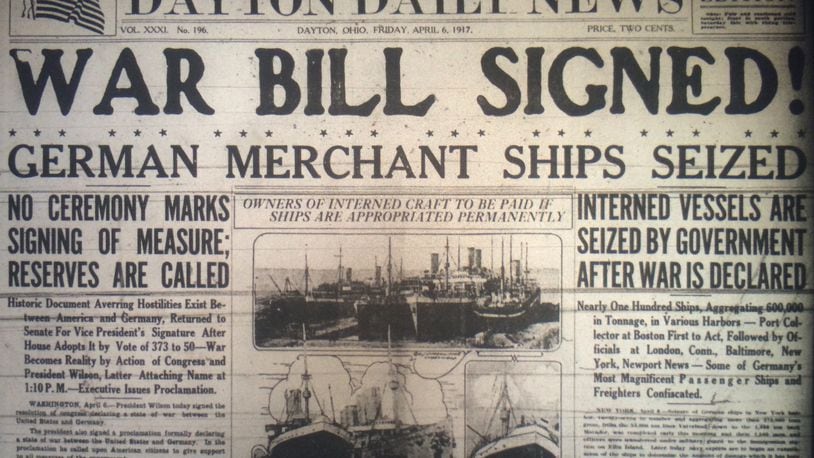As with all wars, Dayton and its citizens played a major role. Here are five things to know about Dayton’s actions in the war.
Dayton companies were producing war materials before the country entered the war. Factories owned by Brownell Boiler Waorks, Platt Iron Works and David Sewing Machine Company were already working for Allied countries by 1915. Once the U.S. entered the war, companies based in Dayton increased production of items like military bicycles, generators, mortar shells and gunsights.
Part of Wright-Patt's name comes from the period. Lt. Frank Stuart Patterson, a nephew of John Patterson of NCR, died in a crash at Wright Field in 1918 while testing new machine gun capabilities. Patterson Field, which became part of Wright-Patterson Air Force Base, was named for him. Three Army aviation fields were set up in Dayton in the summer of 1917 following the declaration of war.
» READ MORE: How a winding set of innovations formed Wright-Patterson Air Force Base
Daytonians were nervous about Germans. Dayton schools, for instance, stopped teaching German and instead switched to French and Spanish. Some companies changed names to sound less German, and there were even some rumors that some had spotted German submarines in the Great Miami River.
One of the world's first drones was built in Dayton. Inventor Charles F. Kettering launched one of the world's first drones as a test project for the Army in the final year of the war. The drone was officially named the "Kettering Aerial Torpedo," but was later called simply the Kettering Bug. Construction of the Bug was completed by the Dayton-Wright Airplane Company, where Orville Wright was consulted.
» WATCH: The Bug, one of the world's first drones, built in Dayton
The 'Tank Center of the Nation.' Dayton companies, Maxwell Motor Car Company and Platt Iron Works, were two of the three chosen nationally by the government to build the M1917 tank. There were 325 tanks constructed in Dayton, making the city one of the country's most known for the relatively new war machine.
Source: Dayton History
About the Author
